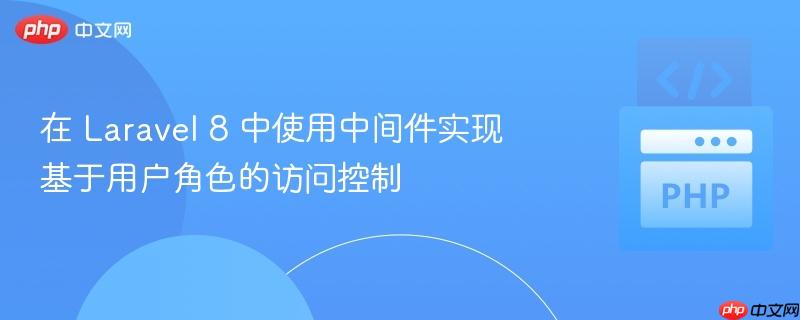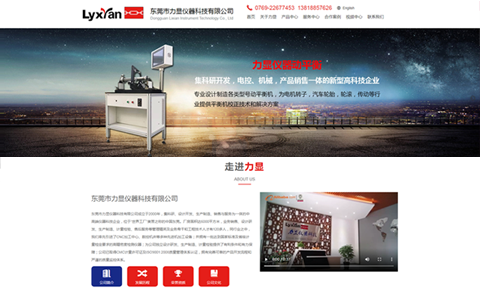
在现代 web 应用程序中,根据用户身份或角色限制其访问特定资源是常见的需求。laravel 框架提供了强大的中间件机制,使得实现这类功能变得直观且高效。本教程将指导您如何在 laravel 8 中,通过自定义中间件,为不同账户类型的用户(例如“个人用户”和“商业用户”)设置独立的访问权限,确保他们只能访问各自专属的仪表盘。
1. 理解用户账户类型与数据结构
在开始之前,确保您的用户表中包含一个字段来区分不同的账户类型。根据提供的问题内容,users 表中已有一个 account_type 字段,用于存储用户的账户类型,例如 'profile' 或 'business'。
Schema::create('users', function (Blueprint $table) { $table->id(); $table->string('account_type'); // 关键字段 // ... 其他用户字段 $table->timestamps();});登录后复制在用户注册时,RegisterController 负责收集用户选择的 account_type 并将其存储到数据库中。注册成功后,用户会被重定向到与其账户类型对应的仪表盘。
// RegisterController.php 部分代码public function store(Request $request){ // ... 验证逻辑 User::create([ 'account_type' => $request->account_type, // ... 其他用户数据 ]); Auth::attempt([ 'email' => $request->email, 'password' => $request->password, ]); // 根据账户类型重定向 if(Auth::user()->account_type == 'profile'){ return redirect()->route('dashboard_profile'); } else { return redirect()->route('dashboard_business'); }}登录后复制2. 创建自定义角色中间件
为了实现基于账户类型的访问控制,我们需要创建一个自定义中间件。这个中间件将检查当前登录用户的 account_type 是否与路由所要求的类型匹配。
使用 Artisan 命令创建中间件:
php artisan make:middleware CheckAccountType登录后复制
这将在 app/Http/Middleware 目录下生成 CheckAccountType.php 文件。编辑该文件,修改 handle 方法:
<?phpnamespace App\Http\Middleware;use Closure;use Illuminate\Http\Request;use Illuminate\Support\Facades\Auth;class CheckAccountType{ public function handle(Request $request, Closure $next, $type) { // 1. 确保用户已登录 // 2. 检查登录用户的 account_type 是否与期望的类型匹配 if (Auth::check() && Auth::user()->account_type === $type) { return $next($request); } // 如果不满足条件,则中止请求并返回 403 错误 abort(403, 'Unauthorized action. 您无权访问此页面。'); }}登录后复制注意事项:
Auth::check() 确保用户已登录。虽然在应用此中间件的路由上通常会先应用 auth 中间件,但这里进行二次检查可以增加健壮性。$type 参数允许我们在定义路由时指定所需的账户类型。abort(403, 'Unauthorized action.') 会在用户无权访问时抛出 403 错误,您可以自定义错误页面来提供更好的用户体验。3. 注册中间件
创建中间件后,需要将其注册到 app/Http/Kernel.php 文件的 $routeMiddleware 数组中,以便可以通过一个简短的键名在路由中使用它。
// app/Http/Kernel.phpprotected $routeMiddleware = [ // ... 其他中间件 'auth' => \App\Http\Middleware\Authenticate::class, 'accType' => \App\Http\Middleware\CheckAccountType::class, // 注册自定义中间件];登录后复制
这里我们将自定义中间件命名为 accType。
 硅基智能
硅基智能 基于Web3.0的元宇宙,去中心化的互联网,高质量、沉浸式元宇宙直播平台,用数字化重新定义直播
 62 查看详情
62 查看详情 
4. 应用中间件到路由或控制器
现在,您可以将 accType 中间件应用到需要保护的路由或控制器上。
方式一:在路由定义中应用
这是最直接且灵活的方式,可以直接在 routes/web.php 中为特定路由添加中间件。
// routes/web.phpuse App\Http\Controllers\BusinessDashboardController;use App\Http\Controllers\ProfileDashboardController;// 保护商业仪表盘,只有 account_type 为 'business' 的用户才能访问Route::get('/dashboard/business', [BusinessDashboardController::class, 'index']) ->middleware(['auth', 'accType:business']) ->name('dashboard_business');// 保护个人仪表盘,只有 account_type 为 'profile' 的用户才能访问Route::get('/dashboard/profile', [ProfileDashboardController::class, 'index']) ->middleware(['auth', 'accType:profile']) ->name('dashboard_profile');// 示例:直接在闭包路由中使用Route::get('/business-area', function () { return "欢迎来到商业专区!";})->middleware(['auth', 'accType:business']);Route::get('/profile-area', function () { return "欢迎来到个人专区!";})->middleware(['auth', 'accType:profile']);登录后复制说明:
['auth', 'accType:business'] 表示首先会执行 auth 中间件(确保用户已登录),然后执行 accType 中间件,并传入 business 作为 $type 参数。如果用户未登录,auth 中间件会将用户重定向到登录页面。如果用户已登录但 account_type 不匹配,accType 中间件将抛出 403 错误。方式二:在控制器构造函数中应用
如果您希望保护控制器中的所有方法,可以在控制器的构造函数中应用中间件。
// app/Http/Controllers/BusinessDashboardController.phpnamespace App\Http\Controllers;use Illuminate\Http\Request;class BusinessDashboardController extends Controller{ public function __construct() { // 确保用户已登录,并且账户类型为 'business' $this->middleware(['auth', 'accType:business']); } public function index() { return view('auth.dashboard_business'); }}登录后复制// app/Http/Controllers/ProfileDashboardController.phpnamespace App\Http\Controllers;use Illuminate\Http\Request;class ProfileDashboardController extends Controller{ public function __construct() { // 确保用户已登录,并且账户类型为 'profile' $this->middleware(['auth', 'accType:profile']); } public function index() { return view('auth.dashboard_profile'); }}登录后复制注意事项:
在控制器构造函数中应用中间件会影响该控制器中的所有方法。如果您只想保护特定方法,可以使用 only 或 except 选项。例如:$this->middleware('accType:business')->only('index');。始终先应用 auth 中间件,确保用户是经过身份验证的,然后再检查其角色。总结
通过上述步骤,您已经成功地在 Laravel 8 应用程序中实现了基于用户账户类型的访问控制。这种方法利用了 Laravel 强大的中间件功能,无需引入额外的第三方包,即可灵活地保护您的路由和控制器。自定义中间件的强大之处在于其可重用性和可配置性,您可以通过传入不同的参数来适应各种角色和权限检查场景。对于更复杂的权限管理需求,例如基于细粒度权限而非简单角色,可以考虑使用 Laravel 的 Gate 或 Policy,或者集成像 Spatie/laravel-permission 这样的专业权限管理包。
以上就是在 Laravel 8 中使用中间件实现基于用户角色的访问控制的详细内容,更多请关注php中文网其它相关文章!








